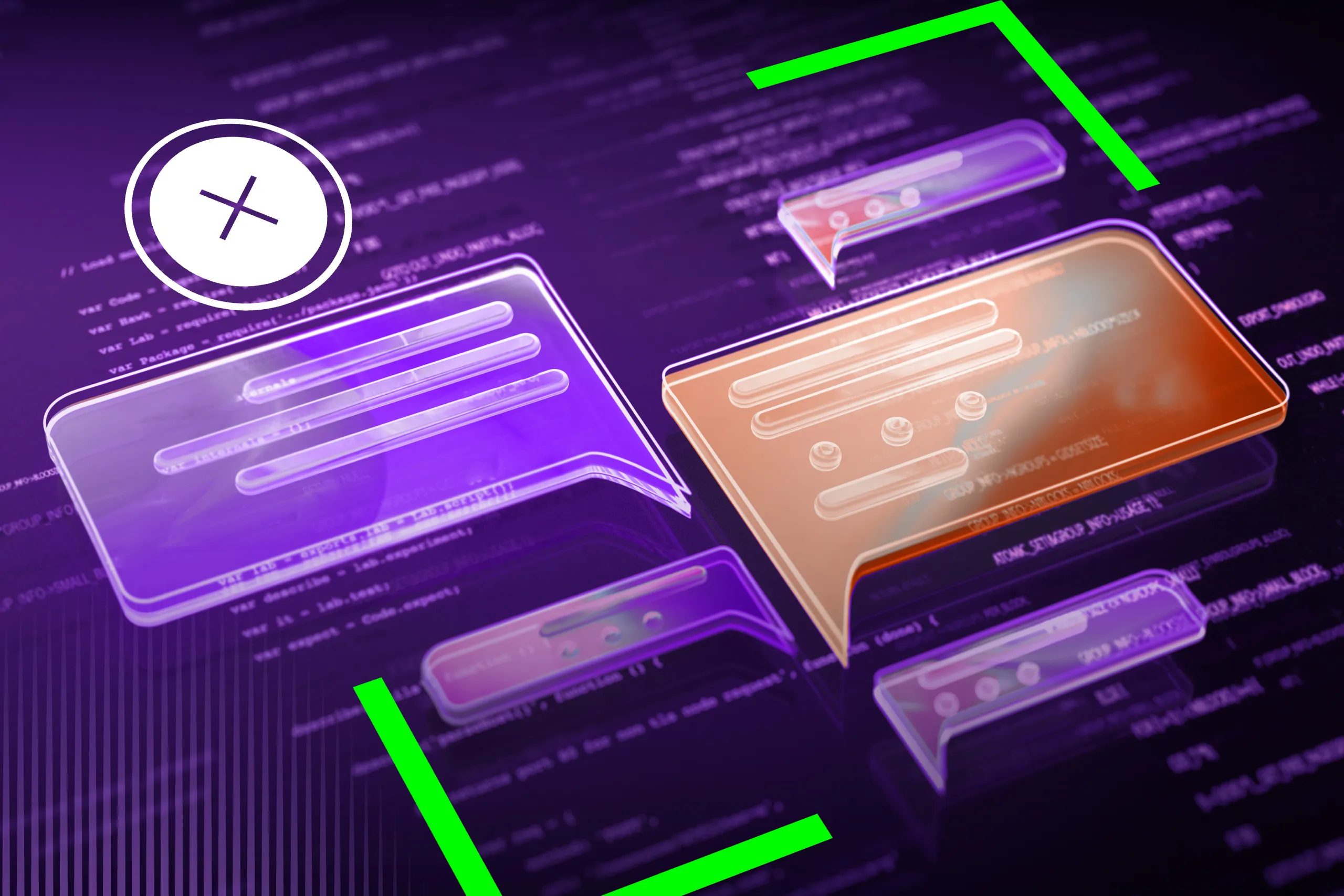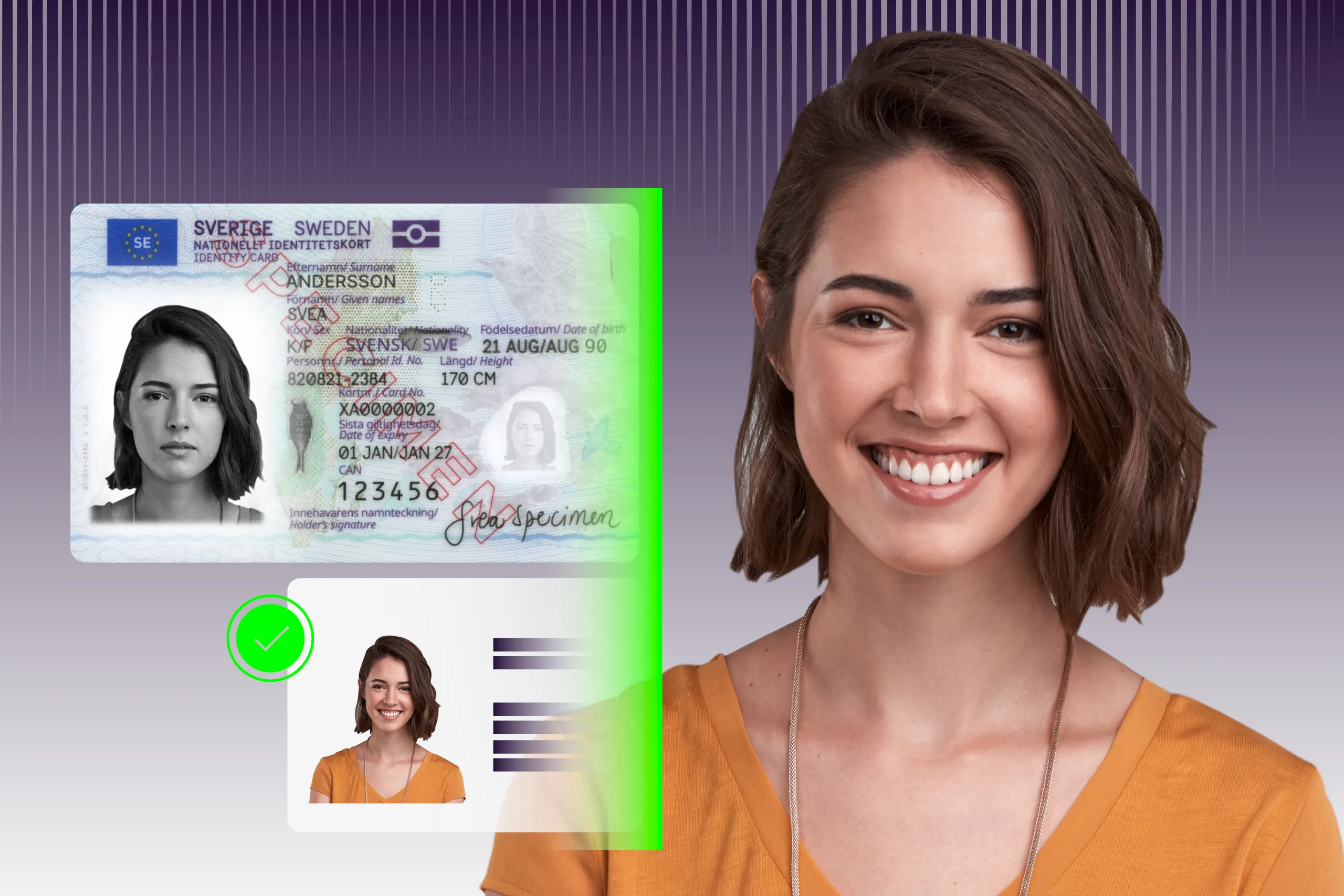Dating apps have evolved from simple profile creation tools to sophisticated platforms that facilitate meaningful human connections. However, the increased use of these apps has also led to a rise in fake profiles, scams, and other malicious activities. Identity verification is increasingly seen as a critical solution to protect users from these threats.
In this post, we'll explore how dating apps currently verify users, why stronger ID verification (IDV) is essential, and how to integrate an effective IDV solution into your platform.
How dating apps verify users now
Dating apps are moving towards a multi-step approach to user verification, blending simple methods like phone and email checks for quick onboarding with more robust tools, such as ID scanning and biometric matching.
Let’s have a look at how this works in practice.
Most dating apps, including major players like Tinder and Bumble, begin with simple verification methods. Users are required to register using a valid email address and a phone number. This process ensures the account is tied to a real communication channel.
To get started with a dating app, it’s usually enough to have a unique mobile number that has not been used with that specific app.

Hinge explicitly states that they don’t conduct any background checks during onboarding.
Unfortunately, this measure alone does little to weed out malicious users. Users can easily bypass these checks by using new email addresses, phone numbers, and devices, even if they have previously been banned from the platform.
There are special services that will help you get back on the app if you're banned, shadowbanned, or want to create an account without exposing a phone number.
For instance, starting fresh on Tinder will cost you $9.95, while buying a fake combo to bypass both Tinder and Bumble algorithms will cost you $17.95. This significantly reduces the effectiveness of this form of verification, making it almost ineffective against repeat offenders.

A service that provides fake numbers to use with the most popular dating apps.
Dating apps can also bolster their verification processes by allowing users to link their social media accounts, such as Facebook. This method is mainly aimed at user convenience—allowing for quicker sign-ups—but it doesn’t guarantee authenticity.
The problem here is twofold. First, many social media accounts are public, which means a malicious actor could create a convincing fake profile using publicly available photos and details. Second, social media platforms themselves don’t offer bulletproof verification, so connecting them to a dating profile doesn’t necessarily prove that the person behind the profile is who they claim to be.

Tinder suggests connecting an account to Facebook or Apple ID.
The major players among dating apps are now stepping up their security game by introducing more robust verification systems, often involving both ID and biometric checks.
Tinder, for instance, uses a two-step process that includes ID verification and photo matching. During this process, users are prompted to scan their IDs and take a video selfie. The app compares the selfie with the photo on the ID to ensure that the person is real and that their profile images match their actual appearance.
Bumble takes a slightly different approach: Users are asked to mimic a random pose shown on the screen and submit a selfie in that pose. Human moderators review the selfie and compare it to the user’s profile photos. If everything matches, the user receives a verified badge.
While these methods significantly reduce the risk of fraud and impersonation, they are not mandatory on most platforms. This voluntary nature leaves plenty of room for unverified users to continue operating on the platform, potentially putting others at risk.

When the verification is completed, the user gets a badge indicating that their account has been verified.
Why should you take online dating identity verification seriously?
As dating apps continue to grow, so do the risks. Identity verification isn’t just about ticking a box for safety; it’s about building a trustworthy platform where users feel secure. Here’s why it’s critical for both dating apps and their users.
Build trust and improve retention
Verified profiles give users confidence that they are talking to someone genuine, not a scammer or impersonator. This sense of security leads to higher engagement and increased user retention. However, as long as verification remains optional, users still face uncertainty.
Many apps allow users to filter out unverified profiles, ensuring they only interact with verified individuals. For instance, Badoo’s Selfie Request feature lets women request a selfie from a chat partner who isn’t yet verified. While useful, this step wouldn’t be necessary if verification were mandatory. A fully verified user base leads to fewer doubts, more meaningful interactions, and less user drop-off due to safety concerns.
Prevent romance scams and fraud
Dating apps are a prime target for scams, especially catfishing, where someone creates a fake profile to manipulate or deceive a victim. The consequences can range from emotional harm to financial loss.
The rise of AI-driven fraud, like deepfakes and synthetic identities, has made things even trickier. A deepfake could mimic a realistic video selfie to bypass traditional verification methods. Basic checks like phone number or email verification no longer cut it. Without strong IDV tools, fraudsters can easily exploit dating platforms, leading to costly and harmful outcomes for users.
By implementing a thorough ID verification process, dating apps can block scammers and protect their users from these threats before they ever get started.
Avoid legal liability and protect minors
Most platforms have policies that prohibit underage users, but without proper ID verification, enforcing these rules is tough. If a minor manages to sign up and engage in inappropriate interactions, it opens the door to serious legal and reputational damage. That’s why age verification for online dating is a key component.
By verifying both the identity and age of users, dating apps can ensure that only adults are allowed to join. This not only protects the platform but also enhances credibility. Users feel safer knowing that minors are kept off the app, creating a more trustworthy community.
Subscribe to receive a bi-weekly blog digest from Regula
How to implement identity verification on your platform
The following steps will guide you in integrating a robust IDV process without compromising user experience.
Step 1: Find a comprehensive IDV solution
Look for an online dating identity verification solution that offers a blend of multi-factor authentication, biometric checks, and document validation. The goal is to streamline the process for both the platform and the user. Ideally, you should work with a provider that covers all these steps in a single platform to avoid complexity during implementation and to reduce maintenance efforts over time.
Choosing the Best Identity Verification Software: A 9-Step Guide
Step 2: Ensure that the submitted ID is valid and authentic
When users submit their documents, make sure that the ID verification tool checks their authenticity. This is crucial in remote onboarding scenarios where it’s tempting for fraudsters to submit photoshopped documents or low-quality scans.
Advanced ID verification tools can assess document integrity by validating expiration dates, cross-checking barcode or MRZ data, and even examining document security features such as holograms.
Plus, if your app operates in multiple countries, make sure your tool supports a broad range of document types and can identify them automatically.
Step 3: Prioritize liveness checks
With the advancement of AI tools, liveness checks have become a big deal in remote verification scenarios.
Liveness checks can include asking users to perform actions like turning their heads or tilting a document in real time. These tests instantly detect if someone is attempting to squeeze in using a pre-recorded video instead of a real-time selfie, wearing a realistic mask to pretend to be someone else, or showing a printed screenshot of an ID instead of a real ID.
Step 4: Employ face matching capabilities
Most popular dating apps have already employed facial recognition technology in one form or another. Platforms can match the user’s face with multiple profile images along with their ID photo to ensure consistency, further preventing fraud.
However, apps generally request users to perform these checks as a gesture of goodwill rather than an obligatory onboarding procedure. It’s vital to make this a mandatory step for new sign-ups in order to bind the profile photos to a person who will actually become part of the community.
Step 5: Ensure compliance with your platform’s architecture
If your app works cross-platform, your identity verification tool should also. The fact is that many providers target mobile platforms and may lack support for browser apps.
It’s also important to decide whether a cloud-based or on-premises solution is best suited for your platform. Cloud solutions are typically easier to implement and scale, but on-premises solutions give you more control, especially in terms of data privacy and compliance. It’s a good idea to discuss this with your tech team.
Potential pitfalls when implementing IDV in a dating app and how to avoid them
Implementing identity verification is essential for building a safe dating platform, but it’s not without challenges. Here’s how to navigate the most common issues.
User drop-off due to complex verification process
A major concern when introducing ID verification is the potential for users to abandon the onboarding process if it’s too complex. Lengthy or confusing steps can cause frustration, leading to fewer sign-ups. But this doesn’t mean you should skip ID verification altogether.
The key is to simplify the process as much as possible. A user-friendly verification flow might involve just two quick steps: submitting an ID photo and taking a selfie. Behind the scenes, the system extracts and verifies the data, matching the selfie with the ID photo. Although the checks are thorough, they don’t require much active user input, minimizing friction and keeping users engaged.
User reluctance to provide personal details
Some users may hesitate to share personal information, fearing data misuse or a breach of privacy. Striking a balance between security and user experience is critical here. The best approach is clear, transparent communication.
Explain the benefits of ID verification upfront—emphasize how it enhances user safety, reduces the chance of scams, and improves match quality. When users understand that these checks make the platform safer and more trustworthy, they’re more likely to complete the process willingly.
Additional investments
ID verification comes with costs, especially if you’re scaling your platform. Cloud-based solutions may offer lower upfront costs, making them attractive for smaller apps. However, as your user base grows, cloud solutions can become expensive. In contrast, on-premises solutions require a larger initial investment but may prove more cost-effective in the long run for large platforms with high volumes of users.
To make an informed decision, it’s essential to weigh the long-term financial impact of each solution. For a detailed comparison, check out our guide on choosing the best pricing model for your needs.
Start verifying today to protect your community
Identity verification is no longer just a trend—it's essential for ensuring the safety and trustworthiness of dating platforms. With the rise of fraud, romance scams, and fake profiles, ID verification plays a crucial role in safeguarding users and enabling them to engage confidently.
By integrating a robust IDV solution, you're not only preventing harmful activities but also showing a commitment to user security, which builds long-term trust. Dating sites that verify identity gain a competitive edge by fostering a safer, more genuine community. This level of security sets your platform apart from competitors that may still rely on outdated or superficial verification methods.
Choosing the right IDV solution is the first step toward a safer environment for your users. Start verifying today to build trust, enhance security, and future-proof your platform. And if you're looking for a trusted partner to guide you, Regula’s solutions are here to help you every step of the way.





